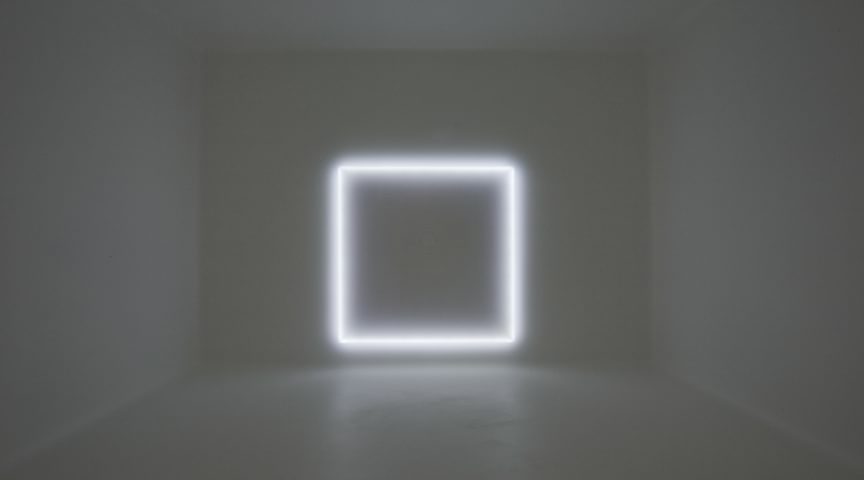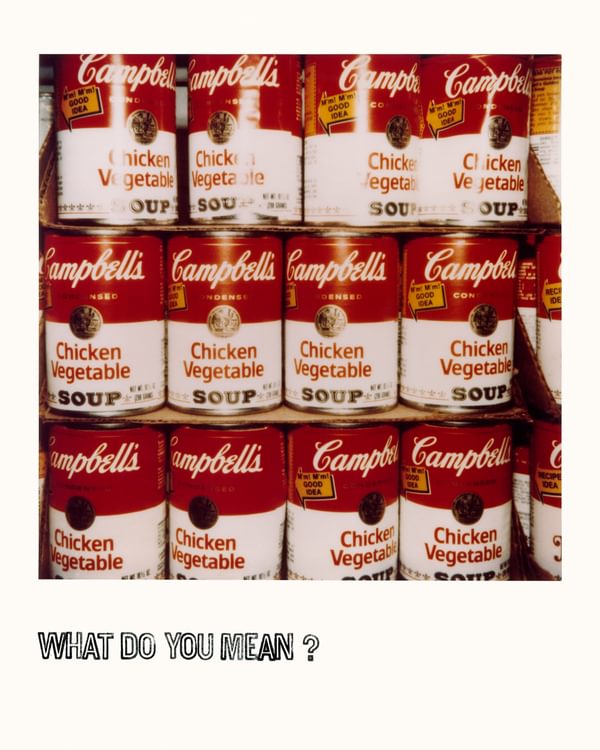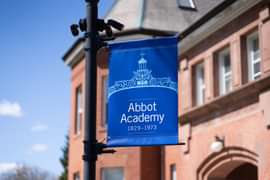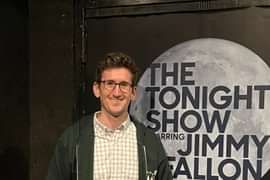
January 27, 2022
On view
Addison exhibitions extended into February and beyondLight, Space, Surface
On view until March 20
Light, Space, Surface: Works from the Los Angeles County Museum of Art will offer museumgoers the opportunity to experience a distinctly West Coast style of art on the East Coast, presenting the art of Light and Space and related “finish fetish” works with highly polished surfaces. The exhibition, which opens at the Addison Gallery of American Art on November 23, 2021, is one of the most comprehensive ever assembled of these artists and highlights works that explore perceptual phenomena via interactions with light and space. Drawn from the collection of the Los Angeles County Museum of Art (LACMA), Light, Space, Surface features a wide range of media, from painting and sculpture to immersive environments.
“It’s a privilege to be able to present this important period of American artistic innovation—often
thought of as Minimalism with a uniquely Californian twist—here on the East Coast,” said Allison
Kemmerer, the Mary Stripp and R. Crosby Kemper Director the Addison Gallery of American Art. “Transforming the viewer from passive observer to active
participant, the reflective surfaces, glossy finishes, and shimmering colors of these works demand close
examination and multisensory engagement. Placing emphasis on the experience of the object rather
than the object itself, these artists ask us to consider not what we see, but how we see.”

Inspired in part by the car and surf cultures that dominated Southern California in the 1960s and 1970s—as well as a multitude of other sources—many Los Angeles-based artists pioneered new technologies and utilized the revolutionary materials developed in the region’s growing aerospace industry, including sheet acrylic, fiberglass, and polyester resin, to produce the reduced, crisp, and clean forms essential to their works. While there was no single defining aesthetic among this varied and loose- knit group, these artists, from Mary Corse and John McCracken to Fred Eversley and James Turrell, shared a common interest in investigating how we understand form, volume, presence, and absence through light, whether seen directly or refracted, reflected, and/or viewed through other materials.
Drawing on the Los Angeles County Museum of Art’s extensive holdings of Light and Space and “finish fetish” art, as well as works by second-generation artists inspired by this highly influential first generation, Light, Space, Surface reveals the vibrancy and diversity of this period of American art history. Featured artists include Peter Alexander, Larry Bell, Billy Al Bengston, Judy Chicago, Gisela Colón, Ron Cooper, Mary Corse, Ronald Davis, Guy Dill, Laddie John Dill, Fred Eversley, Robert Irwin, Craig Kauffman, John McCracken, Bruce Nauman, Helen Pashgian, Roland Reiss, Roy Thurston, James Turrell, De Wain Valentine, Doug Wheeler, and Norman Zammitt.
Learning to Look: The Addison at 90
On view until February 6
One of the first museums devoted solely to the art of the United States, the Addison Gallery of American Art has made prescient acquisitions and organized pioneering exhibitions over nine decades, and now holds one of the world’s most significant and dynamic collections of American art across media. In celebration of its 90th anniversary, the museum presents Learning to Look: The Addison at 90, an exhibition that features iconic masterworks, exceptional but lesser-known pieces, and new acquisitions that embody the Addison’s illustrious history and ongoing commitment to groundbreaking artists. With an installation that allows objects to speak across time and media, this exhibition playfully and provocatively juxtaposes works by artists such as Winslow Homer, Jay DeFeo, Martin Puryear, Georgia O’Keeffe, Agnes Martin, Edward Hopper, Martin Wong, Jackson Pollock, and Donald Judd, among many others.
“From our path-breaking commitment to collecting and presenting photography since the 1930s, to
organizing the first ever full-scale retrospective of an Abstract Expressionist with Hans Hofmann: Painter
and Teacher, to being the first museum to exhibit work by artists such as Ruth Asawa, Andy Warhol, and
Francesca Woodman, the Addison has been in the vanguard of the exploration of American art,” said
Allison Kemmerer, the Mary Stripp and R. Crosby Kemper Director of the Addison Gallery of American Art. “This adventurous spirit of collecting, exhibiting,
and using art as a lens through which to examine the ever-evolving American narrative is the driving
force behind our anniversary celebration and the Learning to Look exhibition.”

In addition to the well-known paintings that comprise the core of the Addison’s original collection, many of the works in the exhibition reflect the museum’s longstanding commitment to fostering and championing the work of living artists. For years, the Addison has consistently exhibited, acquired, and commissioned the art of its time with a singular boldness and daring. Early acquisitions of photographs by Margaret Bourke-White and Berenice Abbott underscore that the Addison was one of the first museums to seriously collect photography as a fine art, while important paintings by Josef Albers, John Sloan, and Hans Hofmann testify to the museum’s central role in giving these artists their first American museum exposure and/or retrospectives.
 Donna-Lee Phillips, What Do I Mean When I Say Red? What Do You Mean?, 1980. Archival pigment print, 19 x 16 inches. Museum purchase, TL2021.20.15. Photo credit: Courtesy of the artist and Hal Fischer Associates, © Donna-Lee Phillips
Donna-Lee Phillips, What Do I Mean When I Say Red? What Do You Mean?, 1980. Archival pigment print, 19 x 16 inches. Museum purchase, TL2021.20.15. Photo credit: Courtesy of the artist and Hal Fischer Associates, © Donna-Lee Phillips
Language, Sequence, Structure
On view until February 13
Language, Sequence, Structure: Photographic Works by Lew
Thomas, Donna-Lee Phillips, and Hal Fischer will explore how these three artists in Northern California
disrupted the photographic status quo in the 1970s. Opening at the Addison Gallery of America Art on
October 2, 2021, the exhibition presents the photographic works these artists generated in reaction to
the Bay Area artistic establishment that was rooted in a photographic tradition that privileged beauty,
craftsmanship, and emotion over concept and theory. Included in the exhibition are the entirety of
Fischer’s seminal series, Gay Semiotics; Phillips’ series, What Do I Mean When I Say Red? What Do You
Mean?; and Thomas’ foundational conceptual works depicting everyday acts over multiple prints within
a single frame.
“This exhibition highlights work from some of the most influential and important, yet largely under- recognized, photographic thinkers and practitioners of the late 20th century” said Gordon Wilkins, Robert M. Walker Associate Curator of American Art and the curator of Language, Sequence, Structure. “Even though their work is ‘conceptual,’ visitors don’t need to be steeped in philosophical treatises and theory to appreciate the ideas, humor, and innovation of these artists’ photographs. It’s a particular privilege to be able to show Thomas’ works alongside those of Fischer and Phillips, artists with whom Thomas collaborated and encouraged to pursue this new approach to photography.”
“The Addison has long been at the forefront of collecting, exhibiting, and promoting American photography and conceptual art,” said Allison Kemmerer, the Mary Stripp and R. Crosby Kemper Director of the Addison Gallery of American Art. “With its first purchase in 1934 of a photograph by Margaret Bourke-White, the Addison became one of only a handful of museums in the country to seriously collect photography. Since then, the museum has consistently made the medium a priority in both its collecting and programming, making the Addison one of the world’s most significant repositories of American photography. The works in Language, Sequence, Structure are the latest additions to our ever-expanding collection of photography, as well as conceptual art, and we are excited to share these complex photographic works with the public.”
About the Addison Gallery of American Art
Devoted exclusively to American art, the Addison opened in 1931 and holds one of the most important American art collections in the country. Its collection includes more than 23,000 works by artists such as John Singleton Copley, Thomas Eakins, Winslow Homer, George Bellows, Georgia O’Keeffe, Jackson Pollock, Jennifer Bartlett, Lorna Simpson, Kara Walker, Jaune Quick-to-See Smith, Kerry James Marshall, and Mark Bradford, as well as photographers Eadweard Muybridge, Walker Evans, Robert Frank, Cindy Sherman, Laurie Simmons, Sally Mann, Dawoud Bey, Carrie Mae Weems, and many others. The Addison Gallery, located in a stand-alone building on the campus of Phillips Academy—a residential school of grades 9 through 12 in Andover, Massachusetts—offers a continually rotating series of exhibitions and programs, all of which are free and open to the public.
The Addison is open to the public 10 a.m. – 5 p.m. Tuesday through Saturday, and 1 – 5 p.m. on Sunday. Admission is free, but reservations are required.
For more information, call 978-749-4015, or visit the website at www.addisongallery.org.
Top Image
Hans Hofmann
Exaltment, 1947
Oil on canvas, 59 3/4 x 47 3/4 inches
Museum purchase, 1960.6





